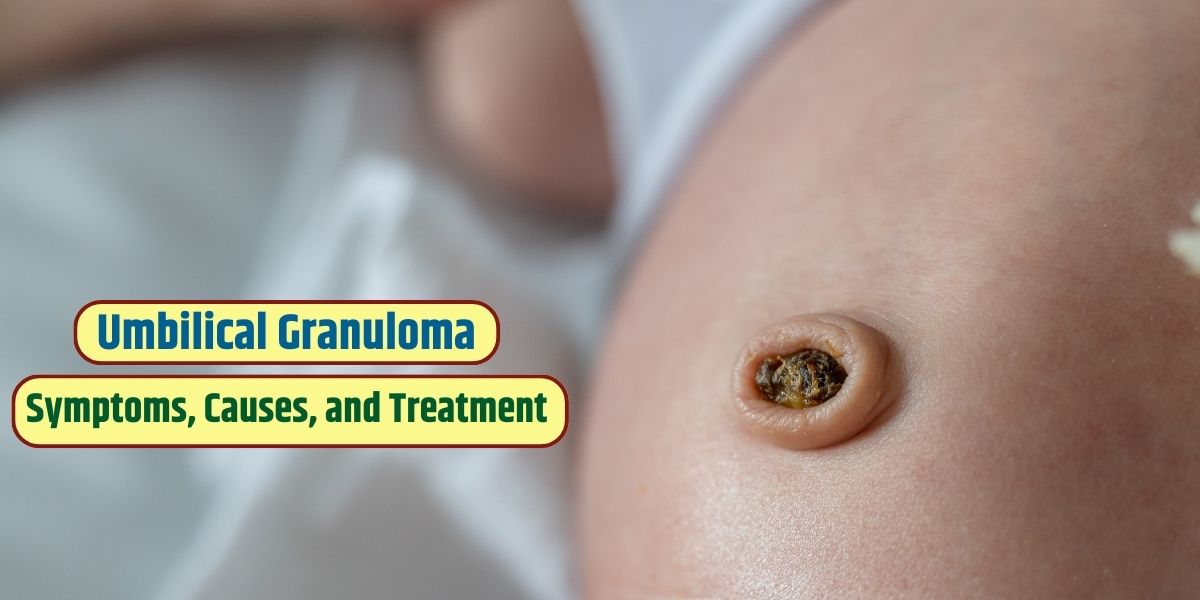An umbilical granuloma is a common condition in newborns that can cause concern for parents. Understanding the symptoms, causes, and treatment options is crucial for effective management and peace of mind. This guide will look into umbilical granuloma, exploring its manifestations, underlying causes, and the various treatment modalities available.
What is Umbilical Granuloma?
An umbilical granuloma is a benign overgrowth of tissue that occurs at the site of the umbilical cord stump after it has been removed. It typically presents as a small, fleshy mass protruding from the belly button. While it is generally harmless, it can sometimes lead to complications if left untreated.
Symptoms of Umbilical Granuloma
The most common symptom of umbilical granuloma is the presence of a pink or red lump at the base of the belly button. This mass may be moist or appear to be weeping. In some cases, there may be slight bleeding or discharge from the granuloma. Additionally, parents may notice that the area around the belly button appears inflamed or irritated.
Causes of Umbilical Granuloma
The exact cause of umbilical granuloma is not fully understood, but it is believed to result from improper healing of the umbilical cord stump after birth. Factors that may increase the risk of developing a granuloma include:
- Inadequate drying of the umbilical cord stump
- Infection at the site of the umbilical cord
- Prolonged use of alcohol or antiseptic agents on the umbilical stump
Diagnosis
Diagnosing umbilical granuloma is usually straightforward and can be done during a physical examination by a healthcare provider. The characteristic appearance of the mass at the belly button is often sufficient to make a diagnosis. In some cases, a small sample of tissue may be taken for further analysis to rule out other conditions.
Treatment Options
1. Silver Nitrate Treatment
One of the most common treatments for umbilical granuloma is the application of silver nitrate. This chemical compound helps to cauterize the tissue, causing it to shrink and eventually fall off. Silver nitrate treatment is typically quick, and painless, and can be performed in a healthcare provider’s office.
2. Surgical Excision
In cases where silver nitrate treatment is ineffective or not suitable, surgical excision may be recommended. During this procedure, the granuloma is removed under local anesthesia. Surgical excision is usually reserved for larger or more persistent granulomas.
3. Cryotherapy
Cryotherapy involves freezing the granuloma with liquid nitrogen, causing it to die and fall off. This treatment option may be used for smaller granulomas or in cases where other treatments have failed.
Complications
While umbilical granuloma is typically harmless, it can sometimes lead to complications if left untreated. These may include:
- Infection – The moist environment around the granuloma can provide a breeding ground for bacteria, leading to infection.
- Bleeding – Granulomas may bleed intermittently, especially if they are irritated or disturbed.
- Delayed healing – In some cases, the granuloma may persist despite treatment, requiring further intervention.
When To See a Doctor
- Persistent or recurrent bleeding from the umbilical granuloma
- Signs of infection, such as increased redness, swelling, or warmth around the belly button
- Failure of the granuloma to respond to treatment
- Concerns about the appearance or behavior of the umbilical granuloma
Consult Dr. Saurabh Tiwari, a renowned pediatric surgeon in Goregaon, Malad, Andheri, and Jogeshwari, is dedicated to providing exceptional care for children.
Conclusion
An umbilical granuloma is a common condition in newborns that can cause concern for parents. However, with proper understanding and management, it can be effectively treated without complications. By recognizing the symptoms, understanding the underlying causes, and exploring the available treatment options, parents can ensure the well-being of their newborns.
Must Read – Umbilical Hernia In Children




